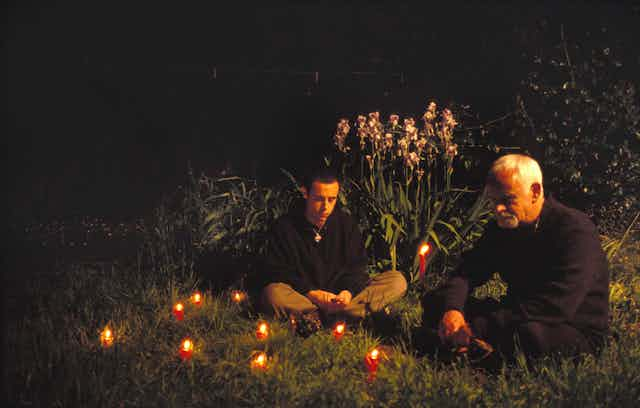Witches, Wiccans and other contemporary Pagans see divinity in trees, streams, plants and animals. Most Pagans view the Earth as the Goddess, with a body that humans must care for, and from which they gain emotional, spiritual and physical sustenance.
Paganism is an umbrella term that includes religions that view their practices as returning to those of pre-Christian societies, in which they believe the Goddess was worshipped along with the gods and the land was seen as sacred. Wicca focuses specifically on the practice of the British Isles.
Witchcraft has also become a multibillion-dollar business. As a sociologist who has been researching this religion for more than 30 years, I have witnessed this growing commercialization: Witch kits are sold by large companies and in stores – something unheard of when I began my research in 1986.
This surge in popularity has changed these communities in some subtle and not-so-subtle ways. Groups called covens were the norm when I began my research, but as my own research shows, most Pagans now are solitary practitioners. Even while the Goddess continues to be revered, the practitioners’ connection to the natural world, at least for many, is also changing.
Spiritual objects
When I first began my research, I would join Pagans when they went to forests, the seaside or other natural areas to attend a retreat or to participate in a ritual out in nature. I would often see them pick up a rock, a pine cone, a shell or another natural object as they walked along.
Typically, I observed that they chose each object with care, and they didn’t keep every object they found. I once walked beside a man who collected shells; he put most of them back after admiring them until he found one with a perfectly formed naturally occurring hole. He kept that one, as it held a spiritual spark for him.
The objects were seen as connecting the person to both the natural world and to the spiritual realm. Some of these objects were then further imbued with spiritual significance by being placed on an altar during a ritual. Most often these rituals, a part of Wiccan spiritual practice, celebrated the cycle of the seasons in eight holidays called sabbats. But the ritual could also be for a special purpose, such as to provide healing for someone who was ill.
Pagans believe the object from nature was possibly left there for them by the divine, and the ritual further imbued the object with magical energy.
The cherished objects can be passed on as gifts to others who may need them. At a ritual I attended I witnessed one woman, who had recovered from her own illness, give an object to another who was ill. It was clear that she felt the object would be an important tool of healing, and the person receiving the object also viewed it as such.
Process of commercialization
Commercialization started in the 1980s with the sale of how-to books on Wicca. At first, things changed slowly, and only for a minority of participants. By the 1990s, however, commercialization was occurring more quickly – and having an impact on the majority of practitioners, particularly new entrants.
Indeed, even in the early, less commercial days of witchcraft there were always objects that were bought at a shop, such as candles, incense, fabric to make ritual robes or covers for the altars. Some of the objects that were cherished, particularly colored stones and crystals, were bought at occult bookstores or shops.

Many of these objects were inexpensive. As one of the witches who was a member of the first coven I studied in the 1980s proudly told me, one of the things that drew her to the religion was that it required that she spend almost no money, as many ritual items were made by the participants and one could learn about the religion free of charge in covens.
But today most objects can be bought online, and fewer are handmade or handpicked. Additionally, a larger proportion of Pagans are solitary practitioners, who are trained outside of the coven system.
More recently, companies such as the cosmetic purveyor Sephora and celebrities such as the Olsen twins have started directly marketing starter witchcraft kits online.
Nature online
Sociologist Douglas Ezzy was one of the first scholars of contemporary Paganism to write about this growing commercialization. His articles in the early 2000s describe how knowledge – once shared at no cost in covens – became something to be bought in the form of a book. With this change in practice, the social bonds and obligations that came with the exchange of knowledge also came to an end. Although it made it easier for many to learn about the religion, Ezzy argues, it also shifted the focus from self-growth to individual fulfillment.
Ezzy and another religion scholar, Chris Miller, note that many of the Witches trained in covens free of charge believe that the marketing of starter kits and sacred items has reduced them to the mundane. There is no longer a need to enter into a forest or go to the shore to find an object that connects practitioners to Mother Nature. Instead, the object can be sent right to individuals’ homes.
Nature is still seen as sacred and celebrated in rituals, but more and more practitioners are finding the objects for their altars on websites. There is less reason to actually go into the natural world and experience it, but it does make it make it accessible to more people.

